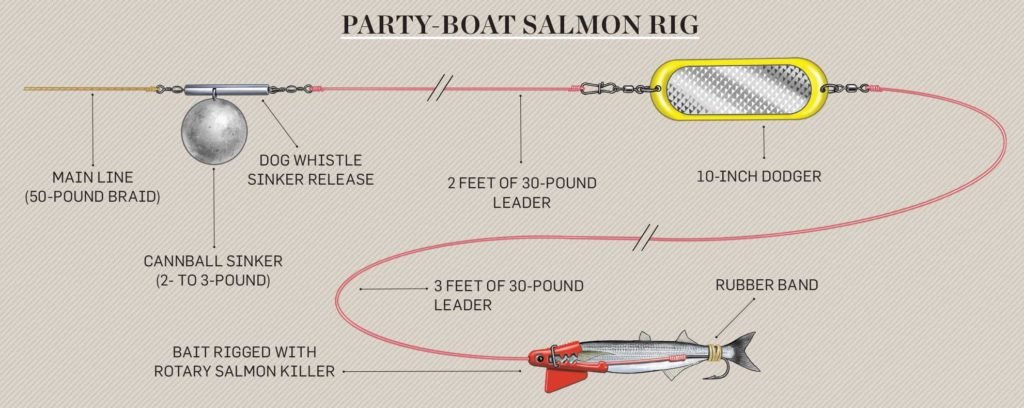Casting a salmon fly rod is both an art and a science, requiring skill, finesse, and practice to effectively present your fly to the fish. Mastering the technique will greatly enhance your chances of success in salmon fishing. Here’s a step-by-step guide to help you cast your salmon fly rod with precision.

How to Cast a Salmon Fly Rod Correctly
Grip and Stance
Before you begin casting, ensure you have a firm yet relaxed grip on the rod. Hold it with your dominant hand, placing your thumb on top and your fingers comfortably around the handle. Your other hand should lightly support the rod a few inches above the reel. Stand with your feet shoulder-width apart, facing the direction you intend to cast.
Prepare the Line
Straighten out the fly line and leader in front of you to eliminate any tangles or loops. Hold the rod at a slight angle, around 45 degrees above the water’s surface, ensuring the line is taut and ready for casting.
Backcast
The backcast sets the stage for your forward cast and is crucial for loading the rod with energy.
- Lift and Pause: Slowly lift the rod backward, allowing the line to straighten behind you. This movement should be smooth and controlled.
- Power Application: As the rod reaches the 1 o’clock position behind you, smoothly accelerate it backward. This motion loads the rod with energy for the forward cast.
- Stop Abruptly: Just before the rod reaches its maximum bend, abruptly stop the backward motion. This abrupt stop is essential for transferring energy efficiently into the forward cast.
Forward Cast
The forward cast delivers the fly to its target with accuracy and finesse.
- Transfer Energy: Shift your body weight slightly forward onto your front foot to initiate the forward cast.
- Accelerate Forward: With a controlled motion, accelerate the rod forward towards your target. Aim to direct the rod tip in a straight line towards where you want the fly to land.
- Stop Abruptly: As the rod reaches the 10 o’clock position in front of you, abruptly stop the forward motion. This sudden stop allows the rod to unload the stored energy, propelling the line and fly towards your target.
Follow Through
The follow-through ensures a smooth and controlled presentation of the fly.
- Extend Arm: After releasing the line, extend your casting arm towards the target to control the distance and accuracy of the cast.
- Mend Line: If needed, make small adjustments to the fly line mid-air to avoid drag once it lands on the water’s surface. This technique, known as mending, helps to achieve a natural drift of the fly.
Practice and Adjust
- Repeat: Like any skill, mastering fly casting requires practice. Spend time practicing your casting technique to improve your accuracy and distance.
- Adjustment: Adapt your casting stroke to account for environmental factors such as wind direction, water current, and the distance you need to cast. Each adjustment will refine your technique and increase your chances of success.
Retrieve and Repeat
- Retrieve Line: Once the fly has landed on the water, retrieve the line in a controlled manner to prepare for your next cast.
- Repeat: Repeat the casting process as necessary to cover different areas of the water and lure salmon into striking your fly.
Tips for Success:
- Patience and Persistence: Becoming proficient at fly casting takes time and dedication. Be patient with yourself as you learn and improve your technique.
- Environmental Awareness: Pay attention to environmental conditions such as wind speed and direction, as they can affect your casting accuracy and distance.
- Seek Guidance: Consider taking lessons from experienced anglers or guides to accelerate your learning and refine your casting skills.
Mastering the art of casting a salmon fly rod is a rewarding journey that enhances your fishing experience and increases your chances of landing that prized catch. With practice and attention to technique, you’ll soon become adept at presenting flies with precision and enticing salmon to strike.




